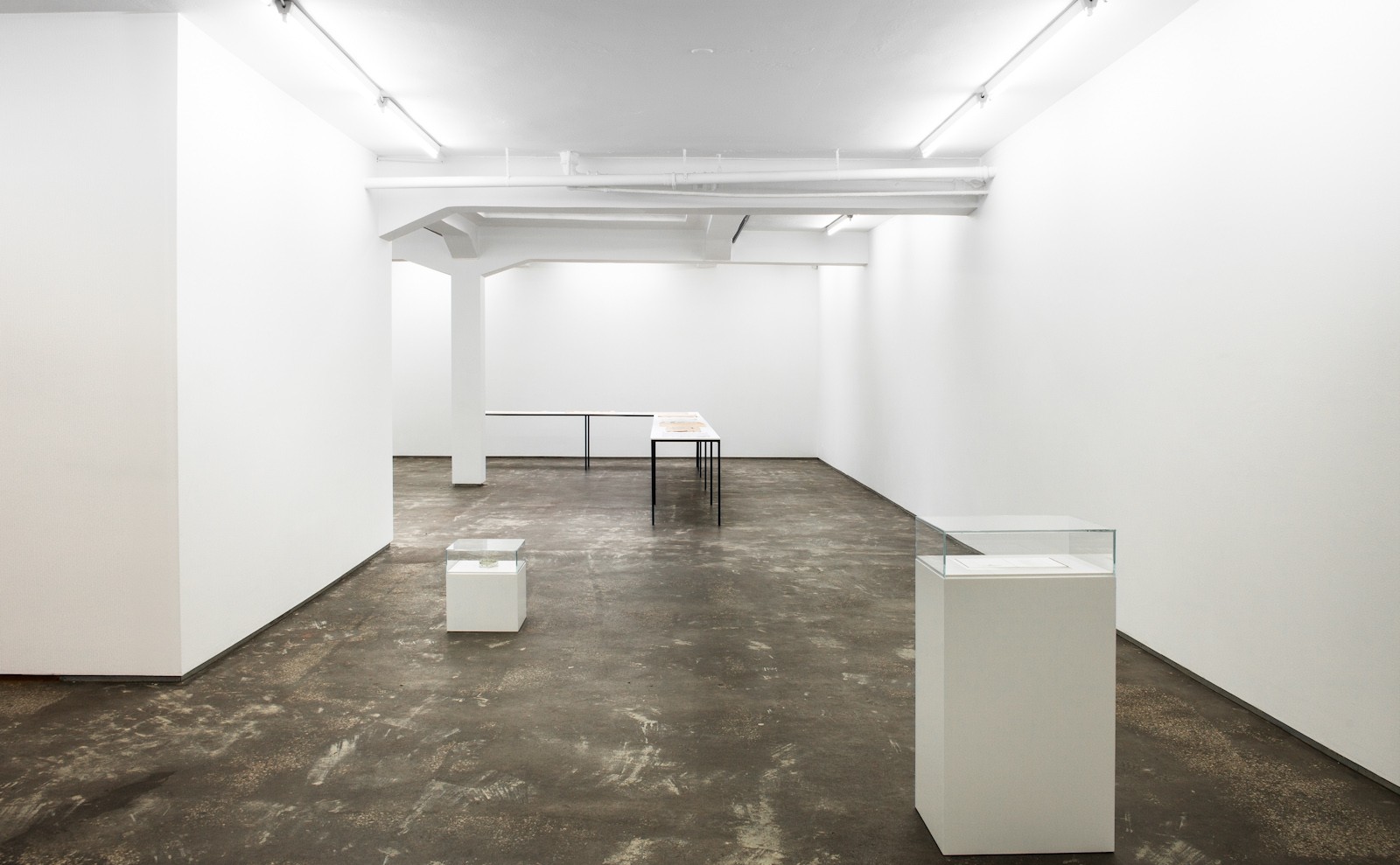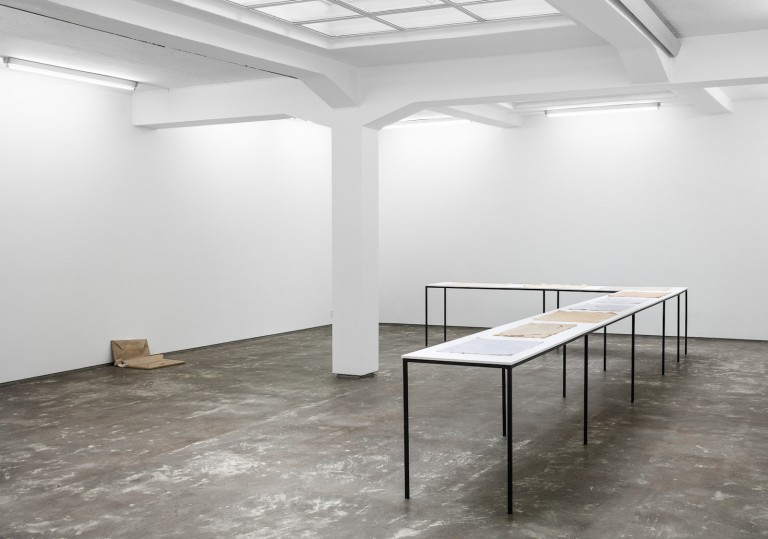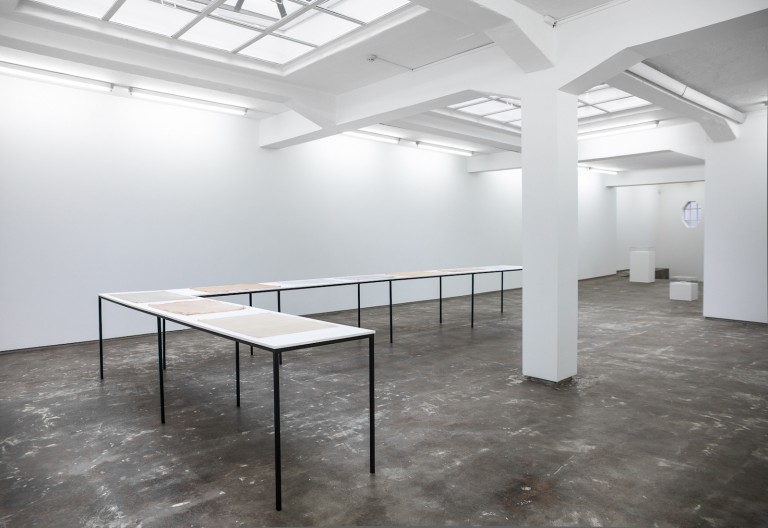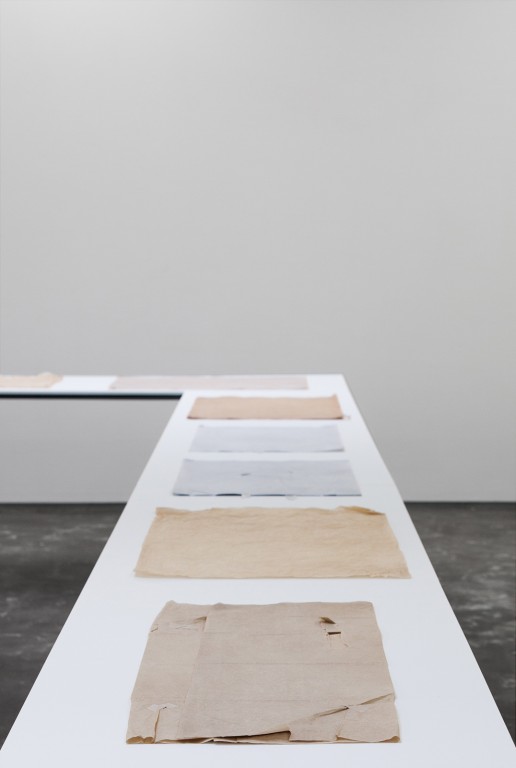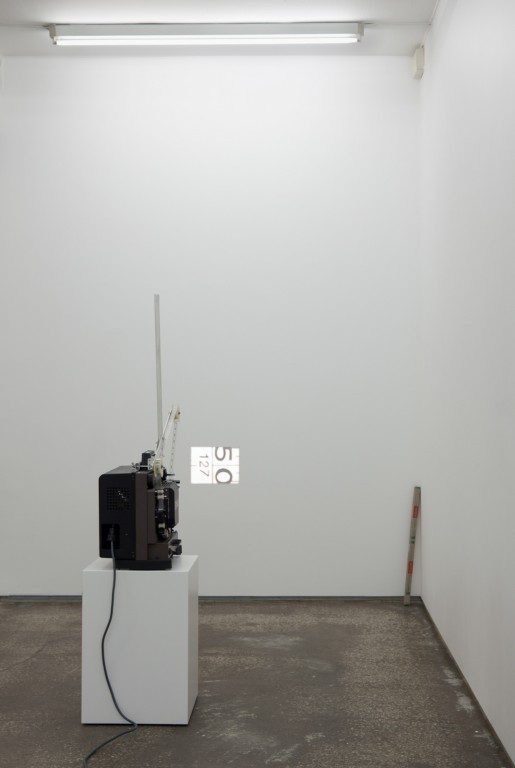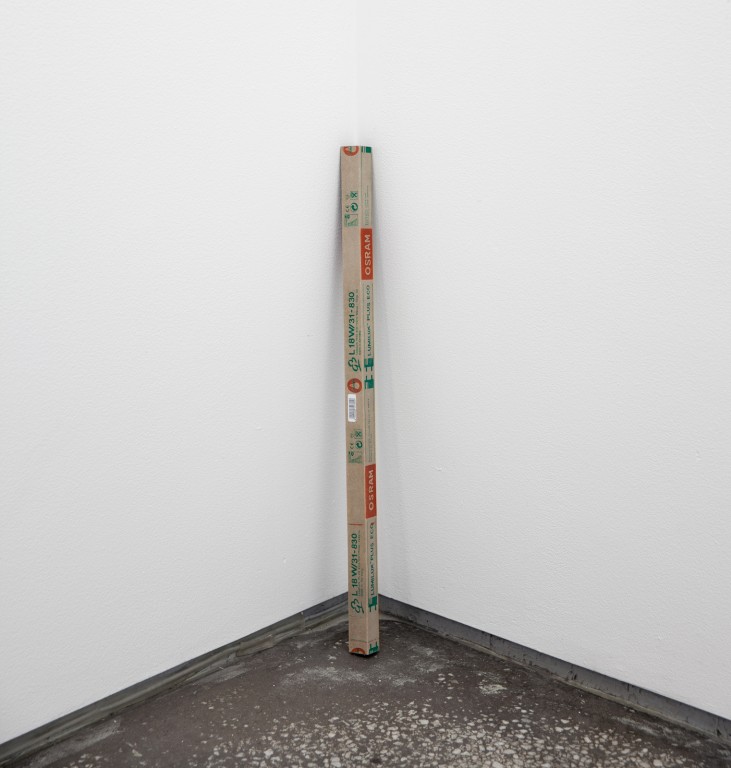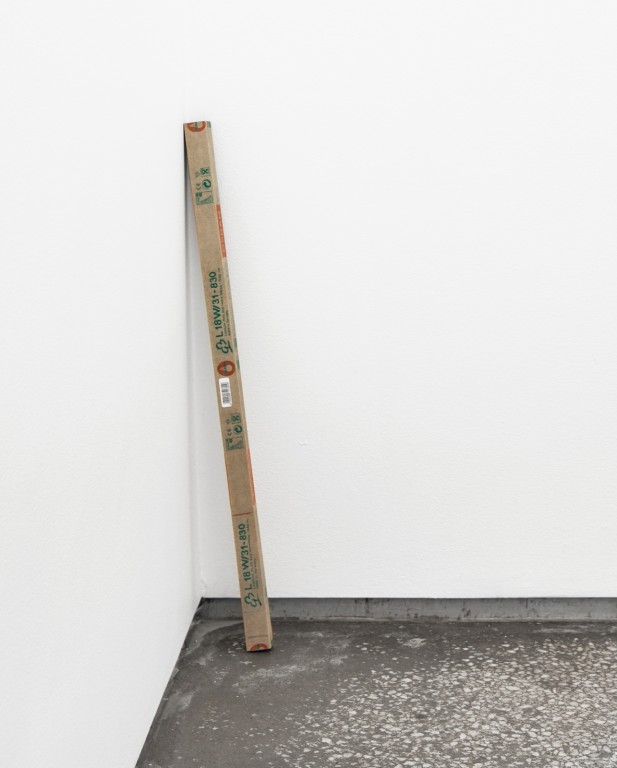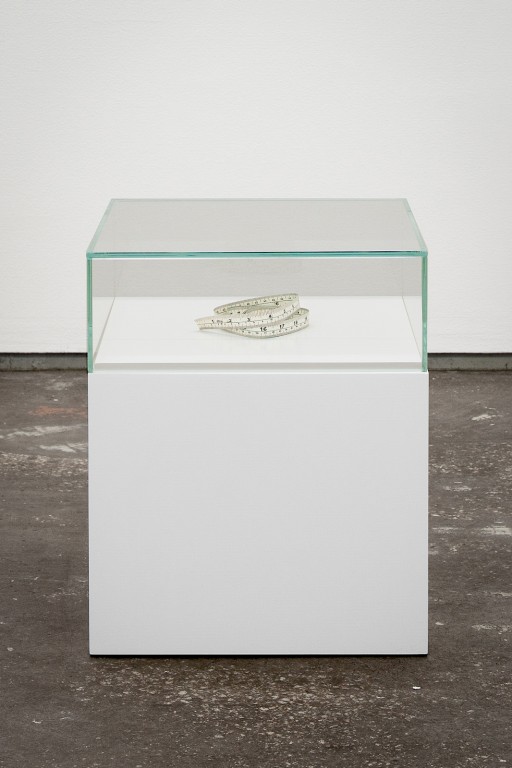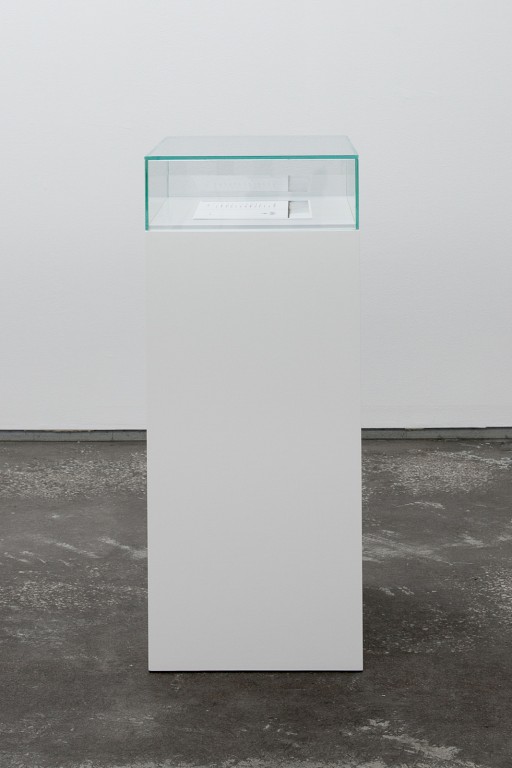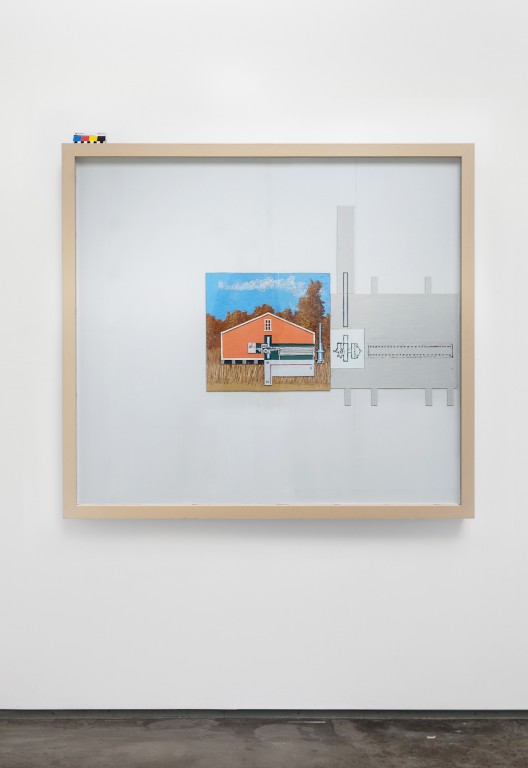OSL contemporary is proud to present its first exhibition with Ane Mette Hol, which furthers the artist's enduring exploration of drawing as medium and conceptual practise. The exhibition comprises 15 works that partly refer to previous pieces, partly introduce new motifs and contextual connections. In the reproduction of an index page, Untitled (After Charles Wood´s How to Draw Figures in Action), 2014, the artist has underlined selected chapters as if guiding the reader to certain considerations. The title also relates to an overall attentiveness in the exhibition to measures and values - material or abstracted, present or absent.
The ground zero of drawing is the blank surface. It is a point of departure at which anything is still possible - and by association it already entails every possibility. The artistic practise consists in narrowing down the options, creating specificity, exposing ideas, becoming metaphorically visible as mind, appearing on the page. The conception of the medium is typically based on the idea that the hand inscribes an anonymous field with subjectivity and significance. Furthermore, in the Norwegian language the word for drawing is directly related to that of the sign (symbol) and also the signature. An agreement is "drawn" and becomes legally binding with an original signature in the signee’s hand. The unique and individual touch separates drawing from diagram, digital design and print and contributes to its perceived value in an art context.
In Ane Mette Hol's practise, paradoxically, the very removal of personal expressionism and "creativeness " becomes a main feature of her artistic choices. At a first encounter the works do not reveal that her medium is drawing. The pieces appear as "ready-mades", seemingly indistinguishable from the industrially produced items represented - elements that typically would enter the gallery space merely as left overs at a storage or the "use and dispose" tools of routine practise. As such, her works become illusions created in pastel chalk and coloured pencil, pencils and pen, glue and paper material. They are captured with precision of surface, materiality, hue, structure and three-dimensional occupation of space. The poet Kenneth Goldsmith, whom Hol herself regularly refers to, captions such a procedure as "uncreativity as creative practise" (2010). By the process of re-creation and re-presentation, by investing the copies with a singular, if invisible, signature - they are taken to a different context and new interpretations become available.
The practise may be linked to concerns relevant to the art of writing, and Ane Mette Hol's production invites "reading". Viewed as a meditation on its basic foundation - the blank surface - one could say that its openness is reformulated in the final work, which still appear "untouched". And so the foundation is reimagined as a as an invested point blank, in which potential layers of meaning stay within the imagination of the viewer.
Her work is often viewed in relation to '60s and '70s conceptualism, to appropriation art and to the questioning of relative values between original and reproduction, invention and replication, systems of evaluation and conventions in art and consumerism. Though these are relevant references they are insufficient in accounting for the "auratic" presence of the meticulously hand-made imitations. Poignantly put in a review by Timotheus Vermeulen, what Hol does is: "nothing less than to return the human to the simulation." [1]
Ane Mette Hol does not attend to signifiers of any recognized value, be it popular praise or elite recognition. She renders the unassuming happenings, necessities and tools of her own surroundings, or texts and items collected and preserved for years. Perhaps it is the personal in the impersonal that make for works that have the ability to "move" regardless of their hard-core conceptualism, and perhaps in the dedication of the self-effacing hand that one may trace the "human" nerve of her simulations. In an upcoming catalogue for Trondheim Art Museum, writer and poet Monica Aasprong writes: "...it is as if Hol in a way brings the hands back into the matter, or substance, again, so that you are reminded of the body. An inversion or an invasion of the readymade." And further: "One might say that Hol draws herself out of the drawing’s fundamental premise, but maybe it is just as right to say that she actually draws herself into it, that she wants to reach the innermost of matter." [2]
Reproductions of silk wrapping papers are laid flat out at an elongated table. The sheets are entitled with reference to the objects they once embraced, as "drawing for one, two, four or different objects", and are meticulously coloured, bent and formed to mimic their models, history of usage included. Leaning against the side wall, a somewhat teared package containing 500 sheets of similar paper contrasts the strikingly individual characteristics of the displayed items, and indicates the scale at which this industrial product is produced, used and disposed of. The concentration and fidelity with which Ane Mette Hol observes and "reinvents" her material transforms it; and its qualities, irregular surfaces and tiny defects acquire the properties of minimal or abstract painting. One might add that by directing her devotion to a section of our surroundings immediately recognizable but rarely noticed, a quiet beauty is uncovered, and along with it the humbling awareness of all that goes undetected.[1] Timotheus Vermeulen, frieze magazine, Issue 161, March 2014
[2] Monica Aasprong, "The space of heaven and our time", 2014
Ane Mette Hol, b. 1979, lives and works in Oslo. Recent solo exhibitions include Trondheim Kunstmuseum , Galerie Kadel Willborn, Düsseldorf and Motive Gallery, Brussels. Recent group exhibitions include “Living in the Material World”, Kunstmuseen Krefeld, “We’ve Got Mail”, Mostyn, Wales, “Prisme”, The National Museum of Art, Architecture and Design, Oslo, “Oh how time flies”, Bergen Kunsthall, Zeichnung, Kunstverein Nürnberg. In 2011, Hol was awarded Statoil Art Award and her work is included in various public collections, amongst others Statoil Art Collection, The National Museum of Art, Architecture and Design, Oslo, Centre Pompidou, Paris and Sørlandets Art Museum, Kristiansand
